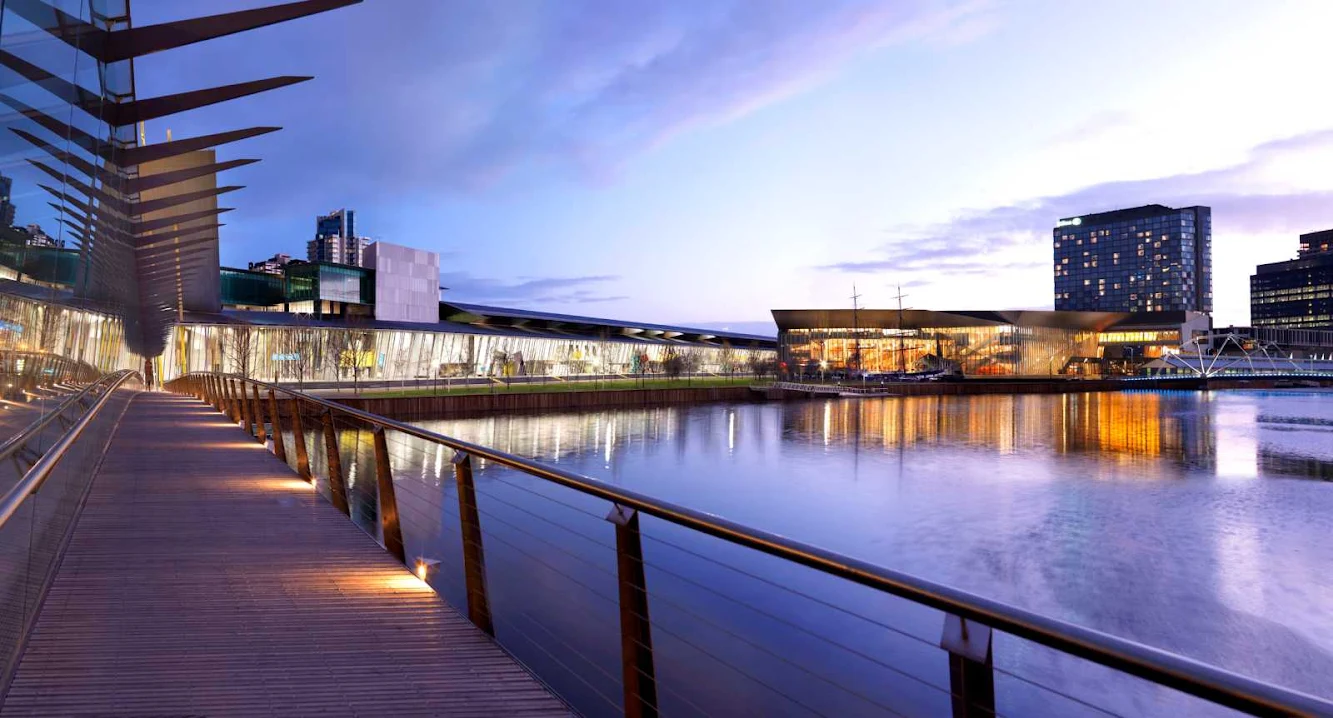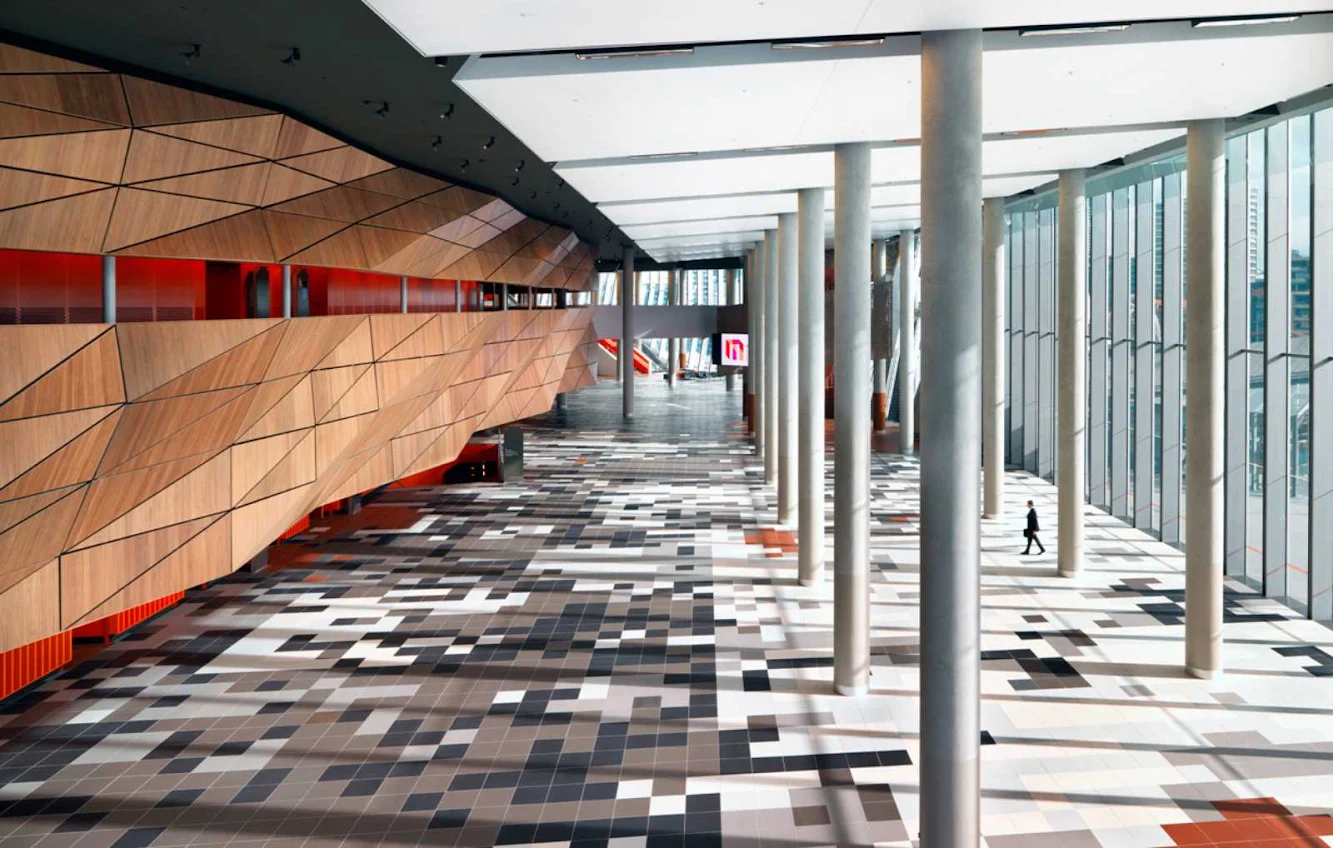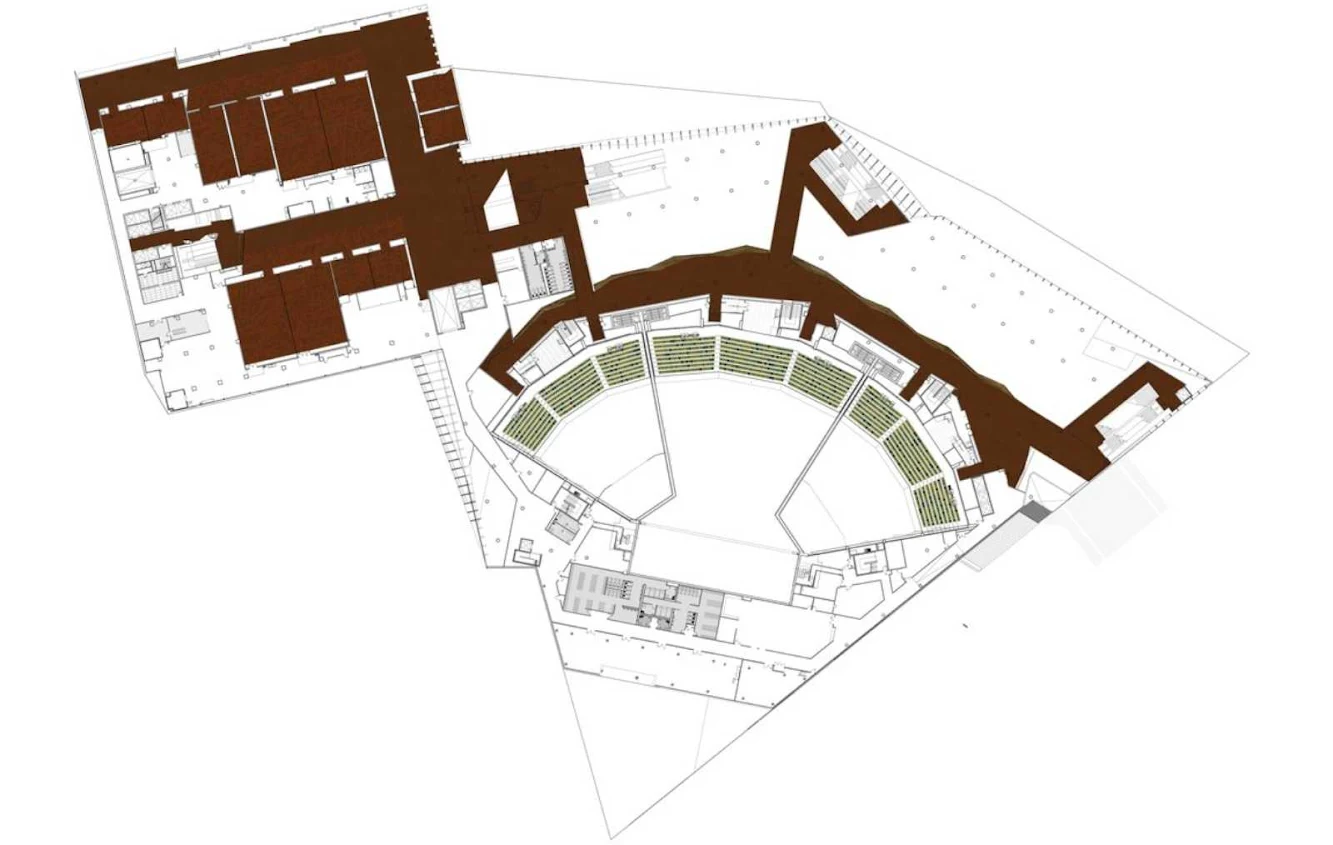
Set adjacent to the Yarra River and adjoining the existing Melbourne Exhibition Centre, the new Melbourne Convention Centre establishes a critical link with the inner city’s fabric. the project brings order to a complex brief, organizing planning to enable flexibility and delineated functional movement throughout the building.

The project completes the vision for the rejuvenation of the river corridor established by the Southbank development twenty years earlier and offers a fulcrum into the newly expanding Docklands precinct to the north. in response to this urban context the triangular figure of the plenary building acknowledges three figurative axes – the colonial city, the developing city and the speculative city to come.

It incorporates numerous large, variable volumes, dark spaces which do not lend themselves to the delivery of energy efficient fresh air, cooling, heating and lighting solutions. to tackle this, traditional air displacement systems were utilised which incorporate sub-floor reticulation of cold and hot air through a series of plenum-type spaces. the net effect is to reduce overall plant size and therefore energy consumption, and to improve indoor environment quality.

Air displacement delivered to the first two metres avoids wasteful conditioning of air above areas which are unoccupied. This is the first time a blackwater mining solution has been used in a public area of this scale, creating significant water savings. Both potable water and landscape irrigation water efficiency and consumption were minimised by water harvesting.

The project achieves a significant reduction of Co2 emissions. This is accomplished through a number of initiatives including the incorporation of highly efficient chillers, pumps and fans in the design, having an average power density of 3w/m² per 100 lux; setting up a solar hot water array to entirely offset the energy consumption associated with occupant amenity hot water and sub metering all substantive energy uses.

The entry foyer is a mighty space that manages scale with merit and ease; the sculpturally articulated auditorium wall contributes a sense of art and the glazed wall to the city provides a tough, definite edge to adjacent land and river. the elaborate array of internal finishes is a constant source of stimulation and decoration throughout the building. They offer a unique artistic licence rarely found to this extent within the fitout of a large public building.

The plenary hall is a magnificent room. Reminiscent of Aalto’s lecture halls, it can be subdivided to make three smaller, fully sound-isolated auditoriums. Flexibility is increased further with the installation of fully automated gala seating and staging that can be lowered to extend the flat performance space. This building speculates on the future of convention centres, integrating art, sustainable systems and operational flexibility as key considerations.

Conceived as a landmark element, the auditorium is defined by a dynamic enclosure reinforced by its independence from the outer skin of the building. Clad in timber, the sculptural shapes of the Plenary walls reflect the textural qualities of the maritime history of the Yarra River. the crafted hulls of clipper ships, the cranes, working platforms of the docks and the engineered structures of the railways are all clues to the genesis of the architectural language. Serviced by a 270 degree foyer, the hall has been designed to meet the multi-modal and concurrent requirements of the facility.

These include multiple public entries, with integrated links to the existing Convention Centre; self contained population flow at the southern circulation foyer with circulation able to occur concurrently within the northern public foyer; and exhibition events can be staged whilst Plenary Hall events are taking place simultaneously. As part of an explicit need to reduce operating and recurrent costs, and to offer a distinctive venue with a competitive advantage, the Plenary Hall is designed to incorporate gala venue automated seating.

The use of this system will allow the seating arrangements to transform into an almost unlimited range of configurations and capacities. Unquestionably a building of urban presence, the Convention Centre builds upon Melbourne’s knowledge of artistically infused, sculptured buildings. the Melbourne Convention and Exhibition Centre was awarded a 6 Star Green Star - Convention Centre Design Pilot Certified Rating, which recognised the project as a ‘World Leader’ in sustainable design.








Location: Melbourne, Australia Architects: Woods Bagot Project Team: Nik Karalis, Rodger Dalling, Ivan Kokrhelj, Peter Korkolis, Gordana Ticak, Bruno Mendes Design Partner: NHArchitecture Service Engineer: Lincolne Scott Contractor: Multiplex Area: 59,515 m2 Year: 2009 Client: Plenary Group Photographs: Courtesy of Woods Bagot